
The Ultimate Guide to Manufacturing Sales and Marketing Collaterals
No matter what products or services your manufacturing company offers, you need manufacturing sales and marketing collateral to get your customers’ attention.
This article provides an in-depth guide to these content pieces and explains how they can help you. Along the way, we’ll give real-life examples of the different sales and marketing collateral types, as well as the stages of the customer journey they target.
What Are Sales and Marketing Collaterals?
Sales and marketing collaterals refer to the wide range of content assets created to facilitate the marketing and sale of a manufacturer’s products or services. These materials can be tangible or intangible (i.e., in digital form) and may form part of a manufacturing company’s overall content marketing strategy.
Common examples of manufacturing collaterals include:
- Logos.
- Blog content.
- Business cards.
- Manufacturing or industrial web design.
- Sales presentations.
- Your manufacturing brand’s color palette.
- Social media posts, and so on.
The goal of creating collaterals is to educate your prospective and current customers on an ongoing basis. Thus, you can develop collaterals for the various stages of the customer journey: awareness, consideration, decision, and retention and advocacy.
In return for your efforts, you can build brand awareness, drive sales, and nurture customer loyalty toward your manufacturing business.
Importance of Sales and Marketing Collaterals in Manufacturing
Sales and marketing collaterals are essential for your manufacturing business. Here are a few reasons that best explain why:
- Boost Conversion Rates: Sales collaterals can boost conversion rates by helping your manufacturing company target customers at every point of their buyer’s journey. They can also equip your team with the materials needed to convince future customers to work with you.
- Clarifies Your Offerings: Well-crafted marketing and sales collaterals make it easier to communicate your manufacturing value proposition to prospective customers. Rather than telling people what you can do for them in lengthy meetings, you can simply provide materials that promote your products and services.
- Saves Time: Web-based collaterals can expedite manufacturing contracts by providing customers with information on demand. When your manufacturing collaterals answer every question your prospects may have, it saves your sales and marketing teams time during the sales process.
- Facilitate Purchasing Decisions: Collaterals can be excellent purchasing decision facilitators in large organizations with multiple stakeholders. The breadth of information they provide can help decision-makers make informed purchasing decisions quicker.
In essence, collaterals can help speed up decision-making among B2B buyers in industries with particularly long sales cycles, such as B2B manufacturing.
Types of Sales and Marketing Collaterals
There are sales and marketing collaterals for every stage of the customer journey. Here are the types you should know.
Awareness Stage
Collaterals you can use to create brand awareness for your manufacturing company include:
- Blog Posts: These are an excellent way to educate prospects about what your manufacturing company can do for them. As the Specialty Design & Manufacturing blog (pictured below) shows, you can discuss a variety of topics:
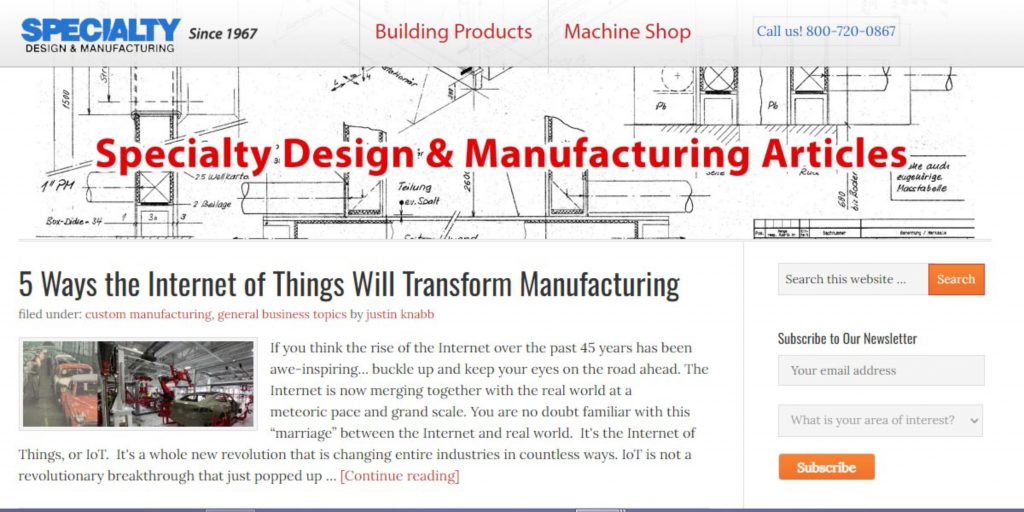
Blog posts can answer frequently asked questions about your business and educate prospects about common pain points.
Besides publishing blog posts on your manufacturing website, you can also promote these posts on social media and via email marketing and other channels.
- Webinars: Webinars offer the opportunity to position your manufacturing company as an expert in its field. You can get your sales reps to host these virtual events and tackle a diverse range of topics. Additionally, you can record the session and make it available for nonattendees to download and watch at their convenience.
- eBooks: eBooks make excellent lead magnets for attracting customers at the awareness stage of their buyer’s journey. You can put them on your website (like Pharma Manufacturing in the image below) or a dedicated landing page and provide them in exchange for the lead’s email address:
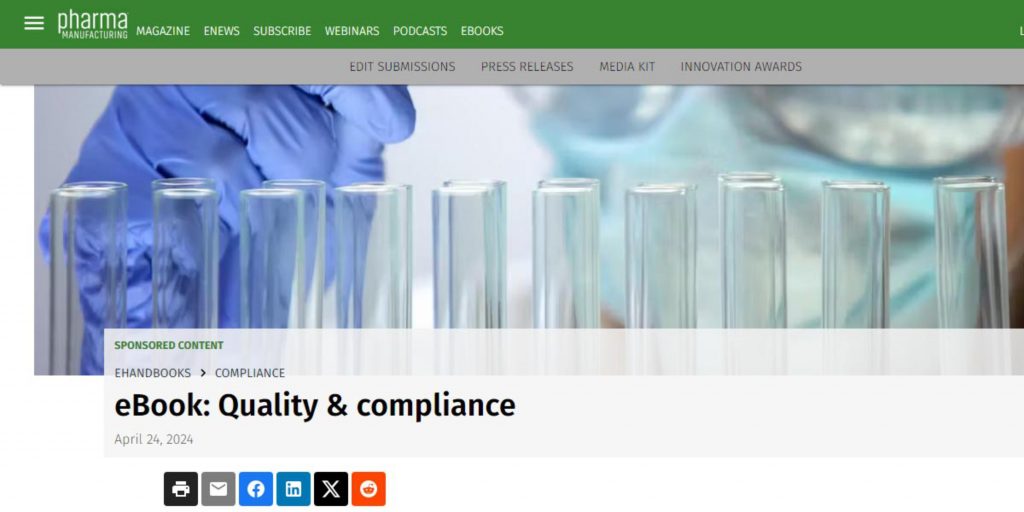
To be effective, the eBook’s contents must provide helpful information.
- Landing Pages: Landing pages are excellent awareness stage collaterals that exist to convert visitors into leads. They usually have some informational text and a lead magnet, though the latter component isn’t a hard rule.
See Apex Industrial’s landing page below:
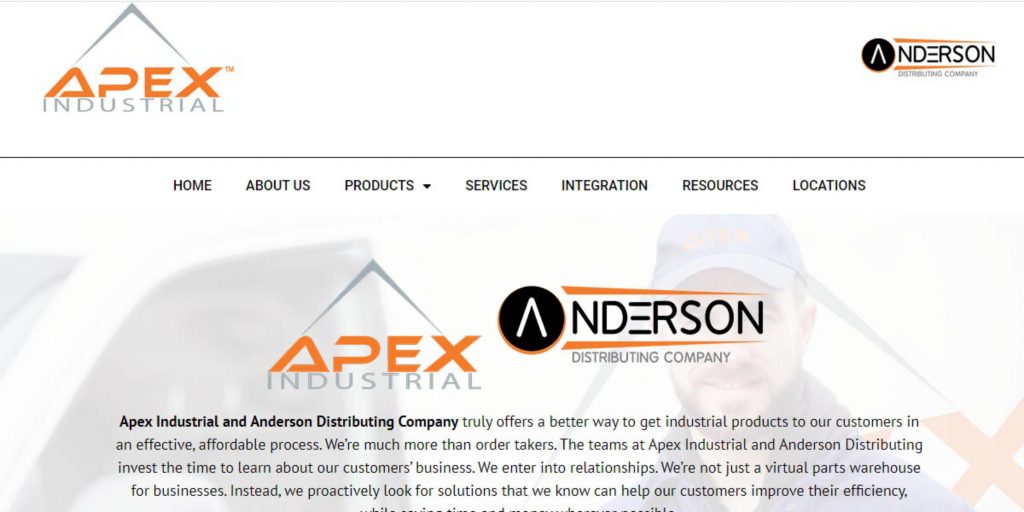
When designing landing pages, include a call-to-action that directs visitors to the next steps. For example, you can include a form on your landing page with a call-to-action button that instructs visitors to “Get a Quote.”
- Infographics: Infographics are images that present information or data in a visually pleasing way. They are excellent for social media marketing and can be combined with other collaterals (e.g., within a blog post).
Combine the above sales collaterals when generating awareness for your manufacturing business.
Consideration Stage
The following marketing and sales collaterals are excellent for targeting customers at the consideration stage of their buyer’s journey.
- Buyer’s Guide: Buyer’s guides (like the one pictured below) can help customers differentiate your products/service from what the competition offers:
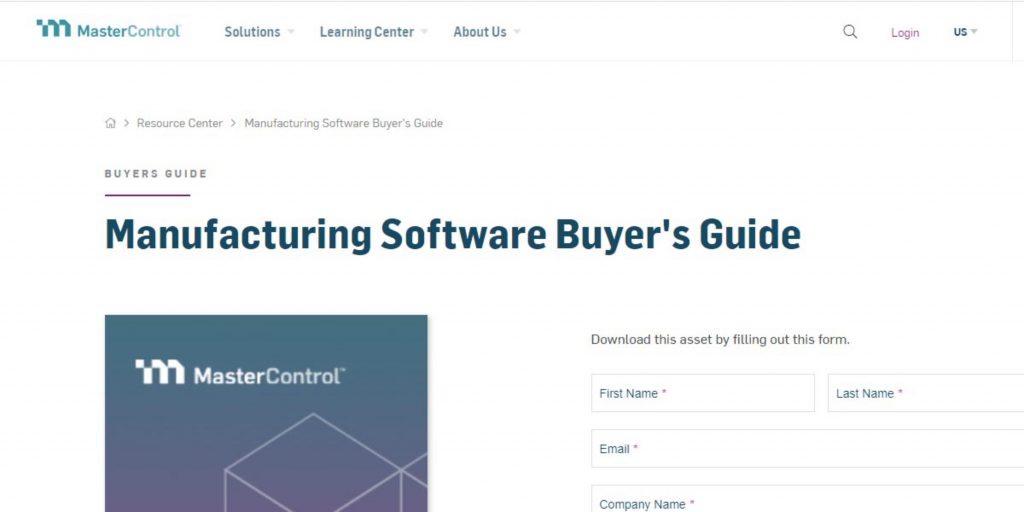
They point out the factors your customers should consider when choosing a manufacturer. You can also use them to compare different companies against yours by highlighting the pros and cons of each.
- Case Studies: Case studies are comparable to testimonials in that they’re great for getting social proof. Here’s an example:
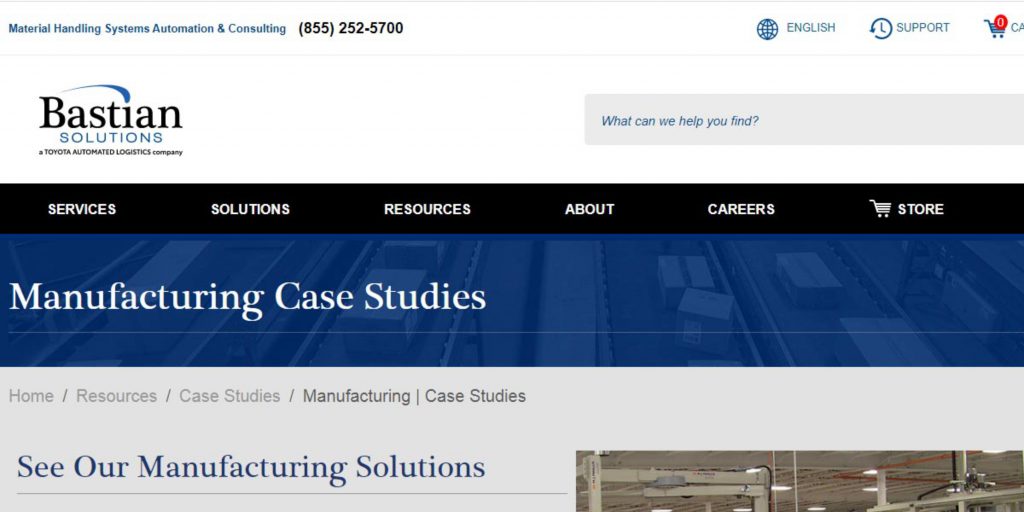
These long-form essays detail problems you’ve solved for past clients, making them useful for demonstrating your company’s prowess.
- White Papers: White papers provide detailed information to customers about various topics. You can create one in-house or sponsor one like Dassault Systèmes does below:
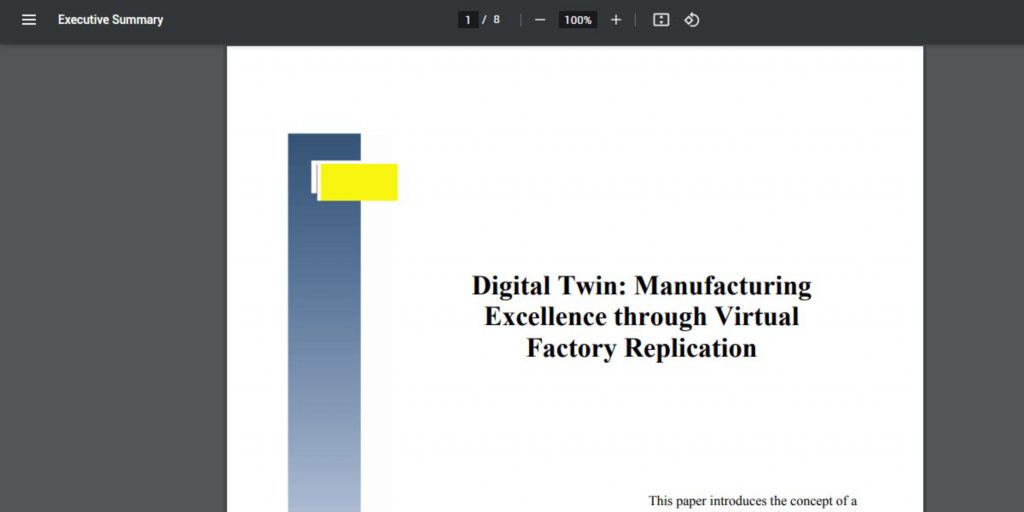
Like webinars, you can use them to portray your company as a thought leader in its industry. These documents typically contain citations and data to support their contents and aim to inform/educate using a more formal tone.
- Product Brochures: Product brochures let you showcase your manufacturing capabilities using a combination of copy and high-quality images. These branded documents are great for highlighting the benefits your customers can expect from doing business with you:
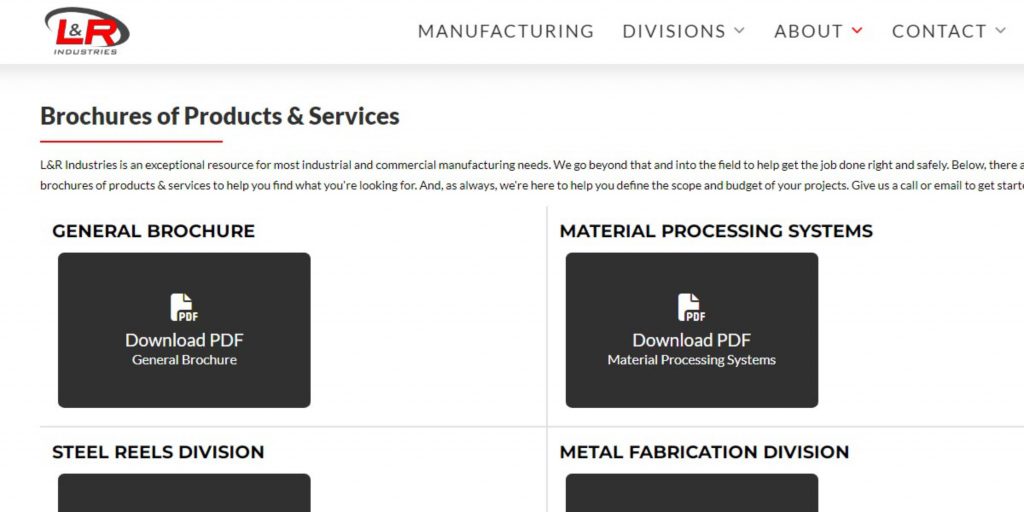
Whether you print physical copies or publish them online (as L&R Industries does above), your product brochure can be a fantastic calling card for your manufacturing business.
- Data Sheets: Data sheets are documents with information about a product’s specifications and other details (see below):
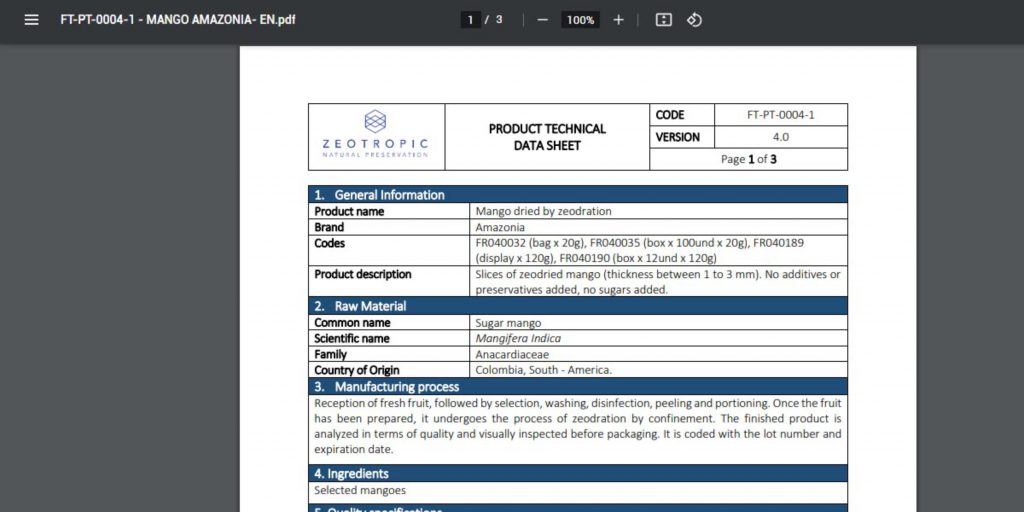
They’re excellent for communicating manufacturing capabilities and your company’s unique selling point (i.e., what makes it different from the competition).
The main thing to remember about the above-mentioned collaterals is that they’re meant to communicate how your business stands out from the competition. Keep that goal in mind during the creation process.
Decision Stage
These collaterals will come in handy when you are trying to convince leads at the decision stage of their journey to choose your manufacturing business. They include:
- Pricing Guides: Price is one of the main factors customers consider at the decision stage of the buyer’s journey. Thus, pricing guides are useful for letting them know the value they’ll get for their money.
- Virtual Presentations: With a virtual presentation, you can give potential customers a tour of your manufacturing facility from the comfort of their offices. You’ll use recorded videos or 3-D simulations instead of images and text to showcase your site and machinery to customers.
- User Reviews: Like testimonials, user reviews provide much-needed social proof that could be the catalyst for a client’s decision to work with you. It’s good to share reviews and customer success stories from former and existing customers. You may also want to ensure your manufacturing business has a good rating on third-party review sites like Clutch.
- Competitor Comparisons: Potential manufacturing clients will likely compare the available options before making a purchasing decision. You can make this process easier for them by providing a side-by-side comparison of your offer vis-à-vis your competitors. This sales collateral can be a one-page comparison sheet with all the information about you and your competitor’s product/service’s features and benefits.
The decision stage of the buyer’s journey is crucial for conversions. Create the above-mentioned marketing collaterals to help leads decide in your business’s favor.
Retention and Advocacy Stage
Once you’ve converted a manufacturing client, you’ll need collaterals that keep them loyal to your brand. That’s because loyal customers can become your best advocates. Plus, customer retention is the secret to long-term business success.
Here are collaterals for the retention and advocacy stages of the buyer’s journey:
- Product Manual: Product manuals are useful for walking the customer through a product. They provide detailed information about its features and capabilities as well as how to use it.
- User Groups: User groups are physical or virtual communities you can create to bring your customers together. The main draw of this collateral is that you can gather feedback and understand customer sentiments by following conversations between group members.
- Product Training Materials: These marketing collaterals are similar to product manuals but provide product-related information in an informal tone. You can also present them in video format.
- Customer Loyalty Programs: Loyalty programs let you reward customers for sticking with your manufacturing company. They’re excellent for fostering advocacy among customers and creating brand ambassadors.
- Post-Sale Activity Guide: This collateral type is for internal use only. You can use it to assign roles to the different departments in your company regarding the activities they’ll engage in to maintain relationships with new customers.
For example, you may have a guide for the customer success team that outlines what they need to do to ensure customer delight.
Create the above marketing collaterals to stay at the top of your customers’ minds even after closing a sale.
Techniques for Developing Sales and Marketing Collateral
When developing your sales and marketing collaterals, apply the following techniques for the best results:
- Know Your Audience: Identify your target audience before developing sales and marketing collaterals. Research their demographics (location, net worth, etc.), needs, and pain points. This information will help you tailor your message and choose suitable types of marketing collateral to create.
- Keep Your Message Clear: When creating collaterals for sales and marketing, keep your message clear and consistent. Choose a brand voice that carries over from one collateral type to the next, and make sure your team members adhere to it. Being consistent will ensure that your brand message reaches potential customers loud and clear.
- Invest in High-quality Design Elements: Invest in high-quality visual elements when creating collaterals. Your campaigns will benefit from the sheen of professionalism these images provide. High-quality images may also help you drive sales by showcasing your company’s products or services in the best possible light.
- Include Calls-to-Action (CTAs): Remember to include CTAs in your collaterals. They’re necessary to prompt potential leads on the next steps to take if they’re interested in doing business with you. If you omit them, potential clients may passively consume your messaging and not interact with your business further.
- Gather Feedback and Iterate: Gather feedback and data to identify your best- and poorest-performing collaterals. You can do this every quarter using tools like Google Analytics for collaterals published on your website. Once you’ve analyzed the results, make adjustments, double down on what’s working, and abandon what isn’t. Your future campaigns will be better for it.
Using the above techniques will give you a solid foundation when developing collaterals for your manufacturing business.
How to Successfully Implement Sales and Marketing Collateral Across Your Team
Want to implement sales and marketing collateral across your team successfully? Here are some tips you can follow to guide the process.
- Engage Reps in the Creation Process: Always involve your marketing and sales representatives in the creation process, as their input can be instrumental in making your sales efforts successful. As the employees in your organization with the most contact with your prospective clients, sales reps can provide invaluable insight into the needs of potential buyers. In fact, they (alongside your marketing team) should take the lead in creating collateral.
- Integrate Collateral with CRM Systems: Integrate your sales and marketing collateral into your customer relationship management (CRM) software. This is necessary because your sales team will need these pieces of content to do their job. The integration will make their workflow frictionless and, ultimately, help you reach your business goals faster.
- Ensure the Collateral Is Regularly Updated: As your product categories change, your marketing materials, like product catalogs, must reflect your new offerings. Regular updates will also ensure that your marketing messages stay relevant and respond to the ever-evolving needs of your target markets.
- Take Input from Team Members: Seek feedback from both your marketing and sales teams throughout your campaigns. In particular, find out which marketing collateral is getting the team results. You also want to make sure both teams are in alignment. They should read from the same script to ensure efficiency and deliver a consistent brand experience.
- Provide Training: Make sure your team members have all the training they need to use your sales collateral. For example, they may need training on how to use the collateral alongside your CRM and sales tools. You can host outside experts or set up virtual training sessions to ensure your team acquires the skills they need to succeed.
In summary, foster an environment where there’s synergy between your collaterals and the sales reps using them.
In Closing
Sales and marketing collaterals help your manufacturing company target customers at every stage of their buyer’s journey. To ensure their effectiveness, identify your audience, craft a clear message, incorporate calls-to-action, and use high-quality images during your campaigns. Also, gather feedback and iterate on what’s working.
Meanwhile, don’t forget to involve your sales and marketing team every step of the way. Their input will be invaluable in shaping effective collaterals for your target audience.



